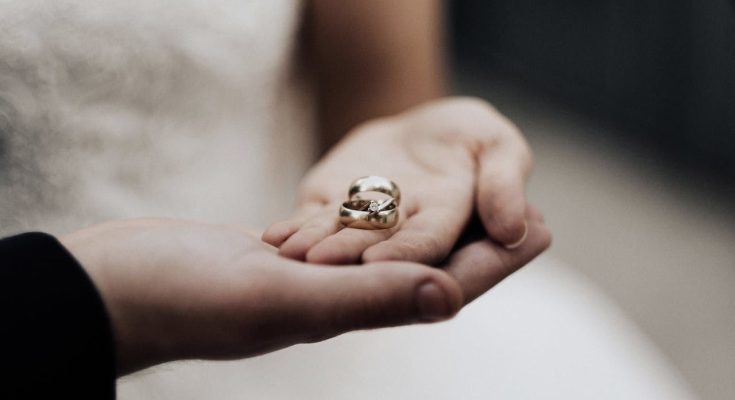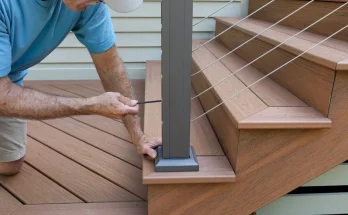One unique method to honor your marriage is to choose matching wedding bands. Though they should express harmony in design, quality, or meaning, his and her matching bands do not have to be the same. From traditional to contemporary designs, many matching ring choices blend grace with personal expression. This post looks at five complementary wedding ring designs for couples to enjoy.
Coordinated Metal Choices
One of the most successful approaches to producing a matching set is choosing the same metal type for both rings. Popular metals with varying appearances and degrees of endurance include white gold, platinum, yellow gold, or titanium. Making two rings out of the same metal guarantees uniformity and a harmonic visual approach. If tastes vary, you may choose like finishes—such as brushed or polished—to provide a matched look. Since both rings will age similarly and need comparable maintenance, matching metals may help streamline upkeep. Many couples also investigate mixed-metal rings with both of their preferred tones, which provide a combined look reflecting oneness. Selecting matched metals is a basic first step in matching rings and providing design, size, and detail options. The common metal type gives both bands a linked, deliberate appearance, whether the rings are basic or have personal additions.
Complimentary Engraving Details
One subtly yet significant approach to linking his and her rings is engraving. Many couples decide to include initials on the inside or outer bands, significant events, or personal inscriptions. Matching or complimentary in language or arrangement, engraved rings provide a subtle link with personal significance. One ring may say “Forever,” for instance, while the other says “Always,” or both might have the same quotation or phrase. If you would rather have visual symbolism, you may easily bind the rings together without writing using etched motifs or patterns. These could be waves, vines, geometric lines, or other ideas with common significance. While it doesn’t change the ring’s general look, the engraving gives the couple a covert or obvious layer of the bond. Careful engraving allows you to create even more important items reflecting your narrative from matching rings.
Coordinating Textures and Finishes
Matching textures and finishes will make the rings seem like a coherent pair, even if you pick different metals or forms. Two rings composed of different metals, for instance, may both have a brushed surface, therefore establishing a visual relationship despite their color difference. Couples that desire a cohesive theme yet have varied design tastes will find this method very effective. Some rings can have multiple finishes—that is, a polished edge with a matte center—that permit greater personalizing while maintaining consistency. Matching textures provide a sophisticated and contemporary approach to coordinating styles without compromising uniqueness. Many designs permit minor variations in ring width or profile while still using the same finish, therefore attaining both harmony and personal expression.
Organized Gemstone Accents
Many times, wedding bands are embellished with elegance and color from gemstones. Another approach to providing harmony between your bands is to choose rings with complimentary or matching gemstone embellishments. Small diamonds, sapphires, or birthstones may be placed into each ring in like places; you do not need big or dazzling stones. These accents may be employed as subdued highlights or totally absorbed into the band. Couples often choose matching stones with significance, like a gemstone connected with a significant date or a birthstone shared by both of them. Coordinated gemstones also provide a range of settings, like channel or flush, which let one match their taste while preserving uniformity. You may also join the rings visually with stones of various cuts but the same kind. Gemstone additions provide your wedding rings more individualized and strong connection as well as beauty and meaning.
Contemporary Minimalist Matching Bandwork
Many couples may find minimalist ring designs to have a neat, classic appearance. Couples seeking a sleek, modest look that nevertheless feels sophisticated will find matching minimalist rings perfectly. When one spouse chooses a matte finish and the other like a polished surface, these kinds of wedding bands for couples may represent common tastes while giving room for individual expression—that is, both bands preserve the same profile and metal type. Subtle design elements like beveled edges, geometric forms, or low-set patterns that contribute individuality without overpowering the style abound in many minimalist designs. Because minimalist bands are so widely accessible in a variety of materials, it is simpler to locate a pair that meets both comfort preferences and style. These rings also go very well with engagement rings and are simple to maintain. Couples that appreciate elegance in simplicity and want rings that will stay fashionable over time often choose matching minimalist bands.
Conclusion
Matching his and her’ wedding rings lets couples appreciate individual style while also expressing oneness. Many design routes unite rings, from common metals and finishes to unique engravings and subdued gemstone accents. Selecting elements that capture connection and uniqueness will enable you to design a pair of bands you will value for many years to come.



